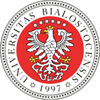Proszę używać tego identyfikatora do cytowań lub wstaw link do tej pozycji:
http://hdl.handle.net/11320/3942Pełny rekord metadanych
| Pole DC | Wartość | Język |
|---|---|---|
| dc.contributor.author | Ożóg, Tadeusz Adam | - |
| dc.date.accessioned | 2016-03-02T10:55:58Z | - |
| dc.date.available | 2016-03-02T10:55:58Z | - |
| dc.date.issued | 2015 | - |
| dc.identifier.citation | Idea. Studia nad strukturą i rozwojem pojęć filozoficznych, vol. 27, 2015, s. 335-360 | pl |
| dc.identifier.issn | 0860-4487 | - |
| dc.identifier.uri | http://hdl.handle.net/11320/3942 | - |
| dc.description.abstract | In this short article we will try to discuss a very peculiar phenomenon of the Japanese religious scene that can be identified throughout the history, showing similar characteristics in completely different religious settings. This phenomenon we should call non-institutional religious practices, non-organized individual religious practices or private religion. Due to a very specific character of Japanese religiousness, free individual religious quest have become an important part of Japanese religious life. After describing some factors that contributed to the emergence of religious tolerance and sincerity, we shall discuss instances of non-institutional individual practices of Shugendō, Komusō and the notion of non-church Christianity proposed by Kanzō Uchimura, thus building an image of Japanese religiousness not from the standpoint of historical development of religious organizations and their teachings, but from the point of view of an individual practitioner, giving the individual an opportunity and his or her intrinsic right not to depend on organized religions, but to freely follow their own religious pursuits. | pl |
| dc.language.iso | en | pl |
| dc.publisher | Wydawnictwo Uniwersytetu w Białymstoku | pl |
| dc.subject | Non-organized Religion | pl |
| dc.subject | Shugendō | pl |
| dc.subject | Komusō | pl |
| dc.subject | Non-church Christianity | pl |
| dc.subject | Kanzō Uchimura | pl |
| dc.subject | Japanese Religion | pl |
| dc.title | Japan, beyond institutional religion. Private religion in the traditions of Shugendō, Komusō and non-church christianity of Kanzō Uchimura | pl |
| dc.type | Article | pl |
| dc.identifier.doi | 10.15290/idea.2015.27.19 | - |
| dc.description.Biographicalnote | dr Tadeusz Adam Ożóg, Doshisha University, Kyoto, Japan | pl |
| dc.description.Affiliation | Doshisha University | pl |
| dc.description.references | Akae, Tatsuya. Shijyō no kyōkai to nihon kindai. Mukyōkai kirisutokyō no rekishi shakaigaku. Tokyo: Iwanami Shoten, 2013. | pl |
| dc.description.references | Bamba, Nobuya. Howes, John F. edit. Pacifism in Japan. The Christian and Socialist Tradition. Vancouver: University of British Columbia Press, 1978. | pl |
| dc.description.references | Breen, John. Teeuwen, Mark. A New History of Shinto. Chichester: Wiley-Blackwell. 2010. | pl |
| dc.description.references | Caldarola, Carlo. Uchimura Kanzō to Mukyōkai. Shūkyō Shakaigakuteki Kenkyū. Tokyo: Shinkyō Shuppansha, 1978. | pl |
| dc.description.references | Caner, Daniel. Wandering, Begging monks. Spiritual Authority and the Promotion of Monasticism in Late Antiquity. Berkley: University of California Press, 2002. | pl |
| dc.description.references | D’Costa, Gavin. Christianity and World Religions. Disputed Questions in the Theology of Religions. Chichester: Wiley-Blackwell, 2009. | pl |
| dc.description.references | Fujita, Shōichi. Gyō to ha nani ka. Tokyo: Shinchōsha, 1997. | pl |
| dc.description.references | Gonoi, Takashi. Nihon kirisutokyō shi. Tokyo: Yoshikawa Kōbunkan, 1990. | pl |
| dc.description.references | Hakari, Yoshiharu. Mukyōkai no ronri. Tokyo: Hokuju Shuppan, 1988. | pl |
| dc.description.references | Hasebe, Hachiro. Kō kenkyu no kanōsei. Tokyo: Keiyūsha, 2013. | pl |
| dc.description.references | Hasebe, Hachiro. Kō kenkyu no kanōsei II. Tokyo: Keiyūsha, 2014. | pl |
| dc.description.references | Healy, Nicholas M. Church, World and the Christian Life. Practical-Prophetic Ecclesiology. Cambridge: Cambridge University Press, 2004. | pl |
| dc.description.references | Higashibaba, Ikuo. Christianity in Early Modern Japan. Kirishitan Belief and Practice. Leiden: Brill, 2001. | pl |
| dc.description.references | Howes John.F., Japan’s Modern Prophet: Uchimura Kanzō, 1861–1930. Vancouver: UBC Press, 2005. | pl |
| dc.description.references | Kim, Sebastian C.H. Christian Theology in Asia. Cambridge: Cambridge University Press, 2008. | pl |
| dc.description.references | Kubota, Nobuhiro. Shugendō, Jissen shukyō no sekai. Tokyo: Shinchōsha, 1988. | pl |
| dc.description.references | Kubota, Nobuhiro. Shugen no sekai. Shigen no seimei uchū. Tokyo: Kōdansha, 2005. | pl |
| dc.description.references | Kurokawa, Tomobumi. Nihonshi ni okeru Kirisutokyō senkyō. Senkyō katsudō to jinbutsu o chūshin ni. Tokyo: Kyōbunkan, 2014. | pl |
| dc.description.references | Lublin, Elizabeth Doron. Reforming Japan. The Woman’s Christian Temperance Union in the Meiji Period. Vancouver: UBCPress, 2010. | pl |
| dc.description.references | Masaki, Akira. Gendai no Shugendō. Tokyo: Chūō Kōron Shinsha, 2011. | pl |
| dc.description.references | Matsuda, Tomohiro. Nihon to Chūgoku no sen’nin. Tokyo: Iwata Shoin, 2010. | pl |
| dc.description.references | Miyake, Hitoshi. En no gy¯oja to Shugendō no rekishi. Tokyo: Yoshikawa Kōbunkan, 2000. | pl |
| dc.description.references | Miyake, Hitoshi. Shugendō shisō no kenkyū. Tokyo: Shunjūsha, 1985. | pl |
| dc.description.references | Miyake, Hitoshi. Shugendō shōjiten. Kyoto: Hōzōkan, 2015. | pl |
| dc.description.references | Miyake, Hitoshi edit. Shugendō shugyō taikei. Tokyo: Kokusho kankōkai, 1994. | pl |
| dc.description.references | Miyake, Hitoshi. Shugendō. Sono rekishi to shugyō. Tokyo: Kōdansha, 2001. | pl |
| dc.description.references | Mukyōkaishi Kenkyūkai edit. Uchimura Kanzōu no keifu. Mukyōkai kirisutokyō sinkō o ikita hitobito. Tokyo: Shinchi Shobō, 1984. | pl |
| dc.description.references | Mullins, Mark Christianity Made in Japan: A Study of Indigenous Movements. Honolulu: University of Hawaii Press, 1998. | pl |
| dc.description.references | Mullins, Mark R. edit. Handbook of Christianity in Japan. Leiden: Brill, 2003. | pl |
| dc.description.references | Nakano, Toshihiko. Minkan ni ikiru shūkyōsha. Tokyo: Yoshikawa Kōbunkan, 2000. | pl |
| dc.description.references | Nanbu, Yasutaka. Nihonjin to Kirisutokyō. Kirisutokyō to nihonjin. Ofunato: Epix Shuppan, 2006. | pl |
| dc.description.references | Ohara, Shin. Kindai Nihon to kirisutokyō no kōgen o mitsumete. Uchumura Kanzō no shōgai. Tokyo: PHP Kenkyūsho, 1992. | pl |
| dc.description.references | Paramore, Kiri. Ideology and Christianity in Japan. New York: Routledge, 2009. | pl |
| dc.description.references | Phan, Peter C. edit. Christianities in Asia. Chichester: Wiley-Blackwell, 2011. | pl |
| dc.description.references | Shibuya, Hiroshi. Kindai shisōshi ni okeru Uchimura Kanzō. Seiji, minzoku, mukyōkai ron. Tokyo: Shinchi Shobō, 1988. | pl |
| dc.description.references | Takeda, Kyouson. Komusō. Sei to zoku no igyōsha tachi. Tokyo: San Ichi Shobō, 1997. | pl |
| dc.description.references | Teeuwen Mark, Rambelli Fabio, edit. Buddhas and Kami in Japan. Honji suijaku as a combinatory paradigm. London: RoutledgeCurzon, 2003. | pl |
| dc.description.references | Thelle, Notto R. Buddhism and Christianity in Japan. From Conflict to Dialogue, 1854–1899. Honolulu: University of Hawaii Press, 1987. | pl |
| dc.description.references | Uchimura, Kanzō. Uchimura Kanzō Zenshū. Tokyo: Iwanami Shoten, 1981. | pl |
| dc.description.references | Wakamori, Tarou. Yamabushi. Tokyo: Chūō Kōronsha, 1964. | pl |
| dc.description.references | Yanaihara, Tadao. Mukyōkaishugi kirisutokyōron. Tokyo: Iwanami Shoten, 1982. | pl |
| dc.description.pages | 335-360 | pl |
| dc.description.volume | 27 | - |
| dc.description.firstpage | 335 | - |
| dc.description.lastpage | 360 | - |
| dc.identifier.citation2 | Idea. Studia nad strukturą i rozwojem pojęć filozoficznych | pl |
| Występuje w kolekcji(ach): | Idea. Studia nad strukturą i rozwojem pojęć filozoficznych, 2015, XXVII | |
Pliki w tej pozycji:
| Plik | Opis | Rozmiar | Format | |
|---|---|---|---|---|
| idea27_T.A.Ozog.pdf | 237,63 kB | Adobe PDF | Otwórz |
Pozycja jest chroniona prawem autorskim (Copyright © Wszelkie prawa zastrzeżone)

